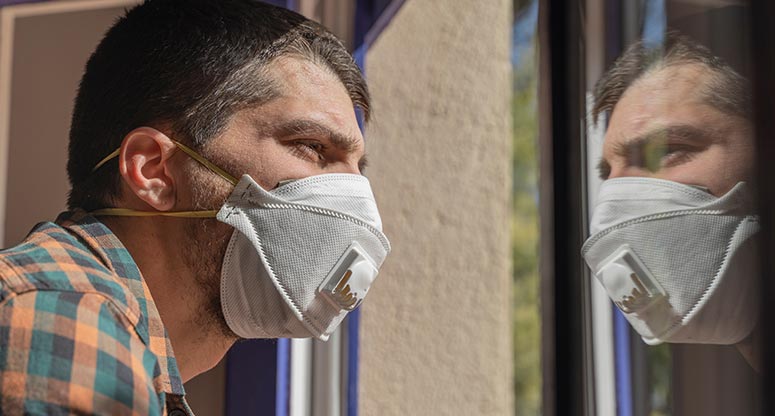Operations4.5-minute read
You have 24 hours to move your training online… Now what?
It is hard to fathom anything altering life so abruptly as the pandemic of the COVID-19 virus. Because of it, the United States and other countries around the world went from doing business as usual to becoming isolationists, with their citizens self-quarantined.

Health risks now dominate the news and empty the streets. Just as jarring, the way we work and the way we learn are being upended.
With closure after closure, work and school have gone from being a bus or car ride away to simply being downstairs, if anywhere at all. And workers and children find themselves forced to adapt as events unfold, in hours rather than days or weeks.
As a result, some businesses and educational institutions are having to shift away from traditional methods to work-at-home and distance-learning models—without time to figure out the logistics.
Given the magnitude, this is akin to turning an ocean liner without a rudder. A global fleet of them, navigating through rough waters.
That said, how do we:
- Cope with such large-scale change and disruption in short order, or for the long term?
- Get people, as creatures of habit, to adjust from personal interaction to virtual engagement?
- Turn the web into an everyday workplace and the main classroom for millions, if not billions?
To make virtual viable, we consulted Tamara Schroer, vice president of Education and Development for Working Solutions, a leading on-demand contact center outsourcer based in Dallas, Texas. Nearly a quarter of a century ago, the company pioneered long-distance learning for its remote workforce, which today is a network 150,000+ strong across the U.S. and Canada.
A former teacher, Schroer is a recognized industry innovator with 20+ years in the virtual classroom. She knows online can be a lifeline for businesses—large and small, remote workers and off-campus students.
She’s the creator of Working Solutions University, a virtual campus for contact center agents. It’s based on the Canvas Learning Management Platform, used by educators and students worldwide.
How realistic is it for businesses to quickly transition to a “virtual,” online training model?

Online instruction isn’t difficult. Trainers or teachers need to adjust to the fact that they can’t sit in the same classrooms as their students.
Source: www.shutterstock.com.
Author: fizkes.
It’s very realistic, based on virtual systems we have today. And given the times, it’s now essential to mobilize learning outside of traditional offices and classrooms, cut off by the coronavirus. Online instruction isn’t difficult. The course material is the same. The teaching methods are just different. Trainers or teachers need to adjust to the fact that they can’t sit in the same classrooms as their students. They can’t look them in the eyes. Still, they must connect.
There are a number of learning management systems, such as Canvas, that enable you to easily organize your lessons. And programs, including WebEx and Zoom, facilitate direct instruction. These are all just tools, however. Personalized instruction matters more.
Effective online instructors know how to engage students and hold their attention. Gamification is a great way to get students directly involved in the learning process. Jeopardy, Bingo and Menti (which delivers quick, online polls) are popular means to making virtual learning interactive and fun. These games also enable instructors to break down their classes into smaller, more accessible groups for individualized lessons.
So it sounds like teaching a class online isn’t that much different than teaching one in person.

You use many of the same tools to measure students’ performance in a virtual education environment.
Source: www.shutterstock.com.
Author: fizkes.
It really isn’t. You use many of the same tools to measure students’ performance. These include tests, quizzes, papers, homework and simulations. The difference is in how you deliver the material. As with all education, the message has to fit the medium.
This means organizing your course materials effectively and determining how to structure your classes. As with “analog” coursework, you need to break up the lessons into small pieces to fit students’ sometimes-limited attention spans. And you need ways to organize your students into small teams so they can participate in group projects. WebEx can help you do so.
The office is more than a place where we do work. It is a place where we socialize and form connections. Does virtual learning change all of this?

Many experts agree that online education is faster and more effective than most classroom instruction.
Source: www.shutterstock.com.
Author: New Africa.
No, not at all. Done well, it augments how we form relationships within teams and serve clients and their customers. Many experts agree that online education is faster and more effective than most classroom instruction. It’s modernized, packing more learning (not necessarily lessons) into fewer hours. Technology lets you net it out. Streamlining gives our agents and coworkers more time to bond as a team. In turn, this high-octane education—e-lesson by e-lesson—enables them to gain greater knowledge about a client’s business, which translates into more value delivered.
Does this mean a global pandemic can force some positive changes in business?

The virus has made it essential that nations and businesses work together toward a common end, a greater good.
Source: www.shutterstock.com.
Author: Deliris.
There’s nothing positive about COVID-19. It indiscriminately infects and kills people around the world. At the same time, the virus has made it essential that nations and businesses work together toward a common end, a greater good. Perhaps, long-distance education, with its flexibility for workforces and students, plays an important role. For the time being, and maybe in the future, virtual might be a workaround for the virus.
As its uses expand, the virtual classroom might become integral to more businesses. Till then, it’s a lifeline to help keep things up and running.
Lessons Learned and Industries Served
Over the past 25 years, Working Solutions has partnered with companies, big and small, from a wide variety of brands and corporate cultures. Whether instructing a workforce online or in person, you need to be able to speak its language to engage.
To that end, here’s some feedback from Working Solutions clients across a number of industries:
Tax: “This is a great way to learn! It is visual and we can see teacher’s screens and get assistance whenever needed!”
Entertainment: “The patience that our instructors have with our lack of understanding is incredible. They don’t treat us like we should know the information when it is first given. They take their time to teach, teach and reteach if needed.”
Travel: “Yesterday, a Working Solutions educator received the documentation at 5 p.m. to train a new airline. Within 24 hours, she had the documentation transferred to a virtual format and 40 agents prepped and tested!”

Contact us here to schedule your complimentary consultation with a Working Solutions expert — today, tomorrow, and well into the future.
We can help.Director of Communications


This Might Interest You...
This website uses cookies to personalize and improve your experience. Continue browsing our site if you agree to our Cookie Policy or feel free to Manage Cookies yourself.


